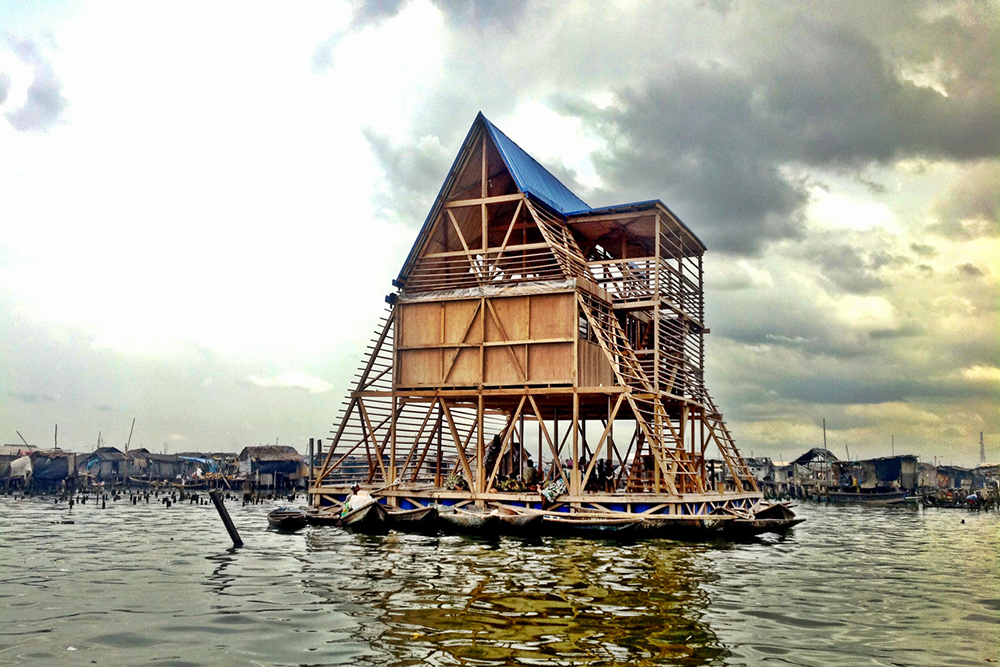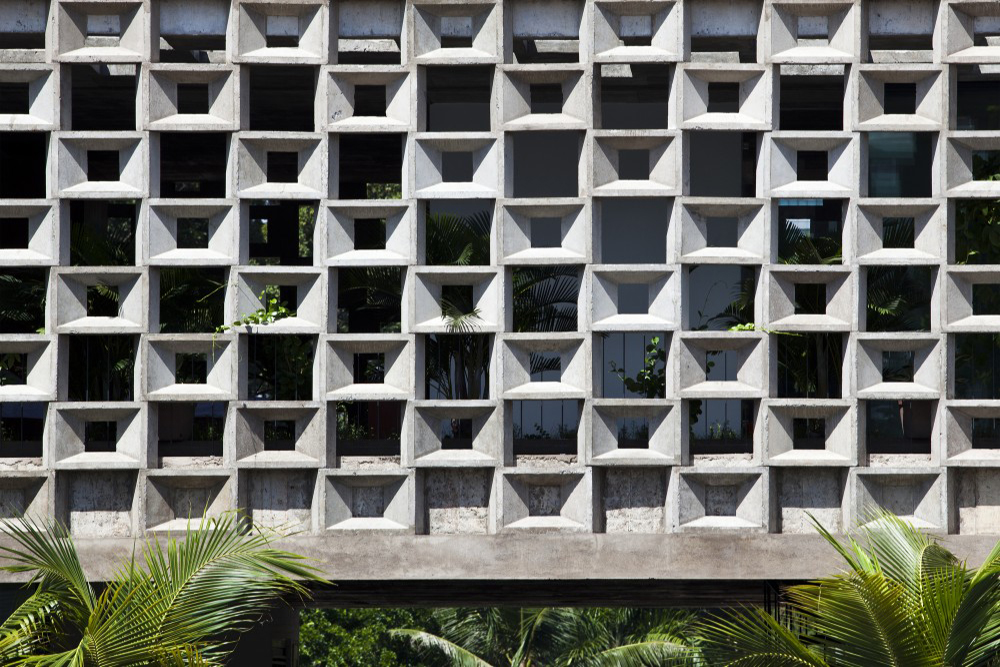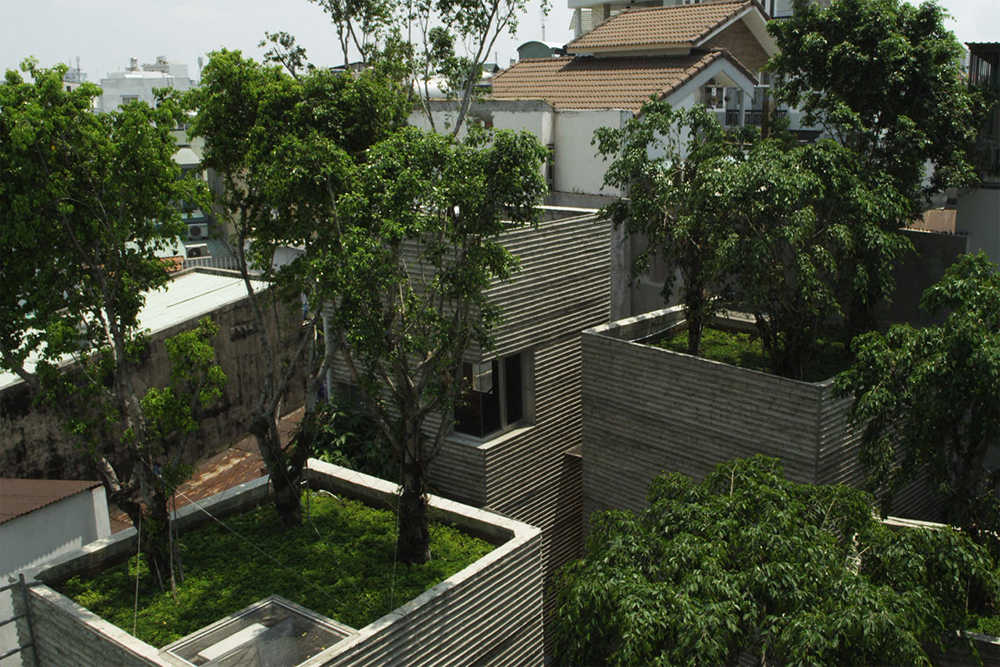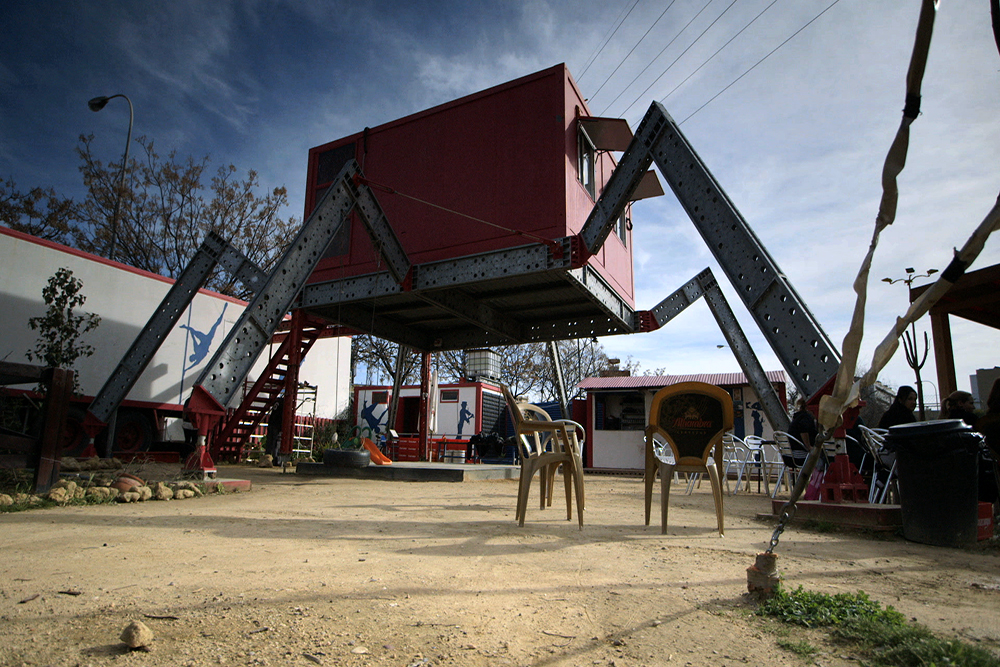Rebel Architecture: Ana Naomi de Sousa

Launched last year by Al Jazeera English, ‘Rebel Architecture’ is a six-episode documentary series that explores the work of six socially engaged architects who all use the built environment to effect change in their own regional context. British journalist and filmmaker, Ana Naomi de Sousa, produced the series and directed two episodes within it. She visited Melbourne earlier this year as a guest of Link Festival, and while she was out, we were fortunate enough to present a public screening and discussion of her episodes, ‘The Architecture of Violence’ and ‘Guerilla Architect’. Following her return to London, Emily Wong tracked Ana Naomi down via email to get her reflections on the background and motivations behind the series, and her ongoing obsession with the craft of architecture.
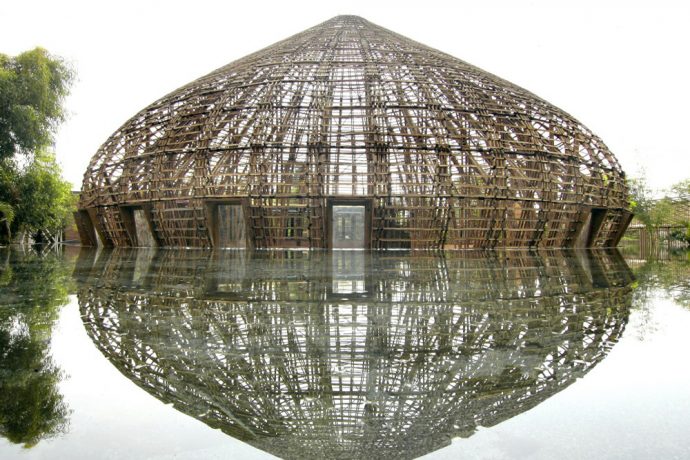
Emily Wong: How did you decide which architects to feature in the series? What criteria did you apply in order to reach the final six?
Ana Naomi de Sousa: From the very start, Dan Davies (the series producer) and I knew that we wanted to create a series about the possibilities of architecture which reflected certain values which were very different from what we saw elsewhere in architecture press and mainstream media. ‘Rebel’ was perhaps our first criteria, though we realised early on that there were different ways of interpreting what is meant by that. Certainly, we knew that we were looking to tell a different architectural story – rather than to produce more coverage of ‘starchitecture’ celebrity architecture – or luxury housing for the 1%.
We were also looking for architects who were seriously socially or politically engaged. There are lots of beautiful, creative projects out there that don’t necessarily need to serve a practical purpose. But, bearing in mind that we were working at a 24-hour news channel, it seemed to us that there were some serious issues around the world such as natural disasters, urban poverty and conflict – and that architecture has a role to play there.
Nonetheless, we quickly became uncomfortable with the many international, humanitarian projects that tend to be very top-down, with little meaningful engagement of the people whose lives they are affecting. As we kept digging, we realised that – although often overlooked – there were in fact architects out there, working in their own communities, who were using their professional skills in very practical, tangible and effective ways. So it’s not a coincidence that all of the ‘rebel architects’ are working in their own communities, regions, or contexts.

EW: What were some of the challenges involved in producing the series?
ANS: Many of the environments we looked at are difficult to film in, for different reasons. The Israeli occupation of Palestine (The Architecture of Violence) posed numerous logistical difficulties for a film that actually proposes to navigate the territory; Nigeria (Working on Water) is notoriously problematic and expensive for film crews; and the area of Baluchistan, Pakistan (A Traditional Future) is unstable and can be extremely dangerous. Fortunately, we were working with imaginative, resourceful filmmakers and crews who knew their regions pretty well – they found a way to make it work.

EW: You’ve taken an observational approach to filmmaking, choosing to focus more on the personal stories of each architect rather than present a more ‘objective’ discussion of all the issues involved in each situation. Why this approach?
ANS: For us, the observational approach was the key to understanding the challenges and realities of the particular environments in which our ‘rebel’ architects are practicing. When you allow your subject to be your guide, you are going to see things you’d never see otherwise.
Stylistically, it’s also because the Rebel Architecture series came from the Witness team at Al Jazeera English – an observational documentary strand committed to providing a platform for stories that don’t normally get told elsewhere in the media. Over time, Witness has developed certain stylistic features, with films often being made by filmmakers about their own region or context rather than by foreign crews and presenters; and the phasing out of ‘voice-of-god’ voice over narration, in favour of allowing subjects to use their own words to tell their stories. All of this fed into the style of Rebel Architecture. We never even discussed following a presenter-led format, I don’t think it could have worked for us. We were trying to do something different; not to replicate old-fashioned models of representation.
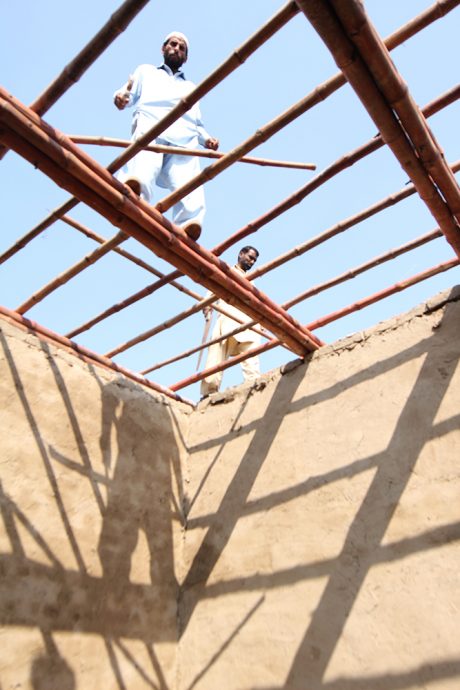
EW: The series features the work of personalities, some of whom have trained in architecture, and some who have had no official training, such as Brazilian builder, Ricardo de Oliveira. In many countries (including Australia) the use of the term ‘architect’ is highly regulated – to what extent is the series a critique of this practice?
ANS: Under the banner of Rebel Architecture, it made perfect sense. Because we’re not architects, we approached the whole subject from the outside – as storytellers and filmmakers. We were not steeped in the debates raging within the profession, nor did we feel bound by its codes and hierarchies. We explicitly decided early on that we wanted to feature a ‘slum architect’ like de Oliveira.
Close to a billion people now live in informal housing, built this way – not designed by professional architects.

EW: Five out of the six architects in the series are male, with the exception of Pakistani architect, Yasmeen Lari. Was it your impression, when researching for the series, that female architects are underrepresented? Are female architects even less likely to be involved in these kinds of alternative practices? Why might this be?
ANS: We were really keen to have a balance of men and women on the series and it is much to our regret we did not manage to do that. But at the end of the day, architecture is a very male-dominated profession and there is no point in pretending that it isn’t. But, four out of six of the films were made by women filmmakers, which I think is important. I don’t think female architects are less involved in alternative practices. We saw from our research that they are very active, perhaps because alternative practices are not necessarily governed by the same, ingrained hierarchies as mainstream architecture. Certainly this occurred to me whilst filming collective architecture groups in Spain.

EW: Both Eyal Weizman (The Architecture of Violence) and Santiago Cirugeda (Guerilla Architect) work in the overlap between architecture and law – Cireguda manipulates legal structures to enable occupation of urban space, while Weizman analyses ruins as evidence for the commission of crimes. What is your interest in the relationship between law and architecture?
ANS: The ‘rebel’ in Rebel Architecture was always intended to be more than just a token title. In my previous films, I’ve looked at different forms of activism and protest, and these have almost always involved groups or individuals bending a law or two; rules have to be broken in order for there to be change. But in particular, I’m fascinated by the creative ways in which activists confront power.
Through the work of Weizman and Cirugeda, I began to see how this particular set of professional tools could be used in a completely different way to how they were intended. Weizman and Cirugeda are rebelling twice over: they are rebelling against the State, using their architectural knowledge, and they are rebelling against the established architectural profession by being a radically different kind of architect.
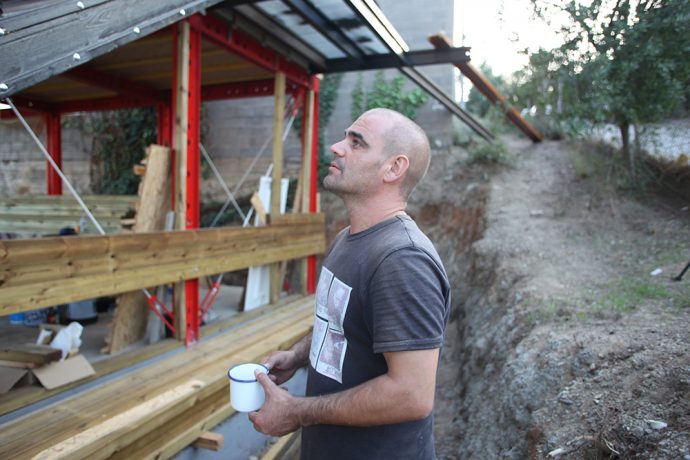
EW: Weizman raises the potential for architecture and the built environment to enact a form of ‘slow violence’ on its surrounds, to be used as a weapon or spatial ammunition in warfare. What do you perceive to be the role – and ethical responsibilities – of the architect in this kind of situation?
ANS: Perhaps since having made the film with Weizman, it seems obvious to me that architecture is very much about controlling people by controlling movement. Mostly this is manifested in fairly banal forms; housing estates with regulated walkways and play areas, for example, or shopping centre corridors designed to lead us from shop to shop without noticing. Increasingly, it is also to do with surveillance, policing and the quest for ‘security’. Architects play a fundamental role in determining how we live, by designing the public and private spaces that we use every day; so of course they bear some responsibility, for better or worse, for those spaces and structures.
However, in recent years there has been an interesting debate in the USA that has centred on the ethical responsibilities of an architect regarding the intended use of a building. The case in point is prison architecture, and a number of professionals have been openly calling for the American Institute of Architects to prohibit, in its ethical code, the design of execution chambers and spaces for solitary confinement. The AIA has rejected the call and also refused to condemn architects who design buildings that involve human rights violations, such as torture facilities. In response, Raphael Sperry, the founder of Architects, Designers, Planners for Social Responsibility (ADPSR) wrote that: “When architects design prisons, we take responsibility not only for the conditions of prisoners and guards on the inside, but for the status of freedom of everyone on the outside as well.”
Despite the decision from the AIA, I think the ongoing debate in the US is an important and interesting one that poses many questions not just for architects, but also for the rest of us. Most of all, I think it’s the sort of discussion that must take place not only within elite architectural institutions and industry press, but in public, and among communities.
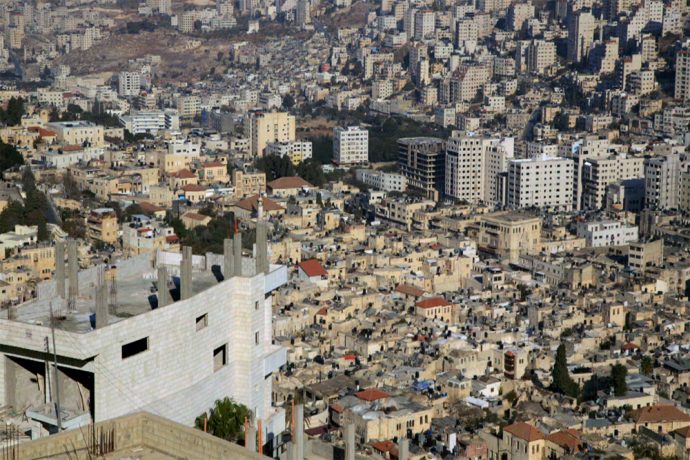
EW: Largely, these ‘rebel’ projects take place in the developing world, from the slums of Nigeria to post-earthquake Pakistan. What can architects in the developed world learn from the spirit of these projects?
ANS: Al Jazeera English is an international channel which broadcasts all over the world, so we were looking for stories that were spread throughout the globe (from Africa, Asia, the Americas, Europe and the Middle East) and that dealt with some of the most urgent contemporary issues on the planet (slum dwelling, poverty, pollution, natural disaster, etc.). We did not consider them as ‘developing’ in contrast to ‘developed’ at all; we were thinking about where our audience is, and what they expected of us. I feel that these kinds of binary terms often reinforce stereotypes and perpetuate the sort of victim-saviour dynamic that has been so unhelpful in humanitarian architecture and engineering to date. It’s significant that the architects in the series are working in their own regions or communities. As Yasmeen Lari says in the episode about post-disaster housing in Pakistan, “The foreign aid has dried up, and it’s a very good thing. It’s time we started doing things ourselves.”
However, there is definitely a suggestion in the series that “necessity has become the architect”, by which it is meant that urgent situations – poverty, disaster, conflict – can provide fertile ground for radical solutions. I think it’s fair to say that risks need to be taken for new solutions to be found; and perhaps in urgent situations, people are more prepared to take risks. Maybe I’m hesitating here, but it’s because we were always aware that there is a thin line between celebrating innovation in the face of adversity, and glamourising poverty.
Overall, I think the spirit of the whole series is that all of these architects have refused to accept limitations on what they can and can’t do. They have broken with convention (and sometimes broken the law!) and they have proved the skeptics wrong. That’s what makes them rebels.

EW: What other projects are you working on at the moment?
ANS: At the moment, I’m developing a few film projects, some of which still involve architecture. I’d never studied architecture or been involved in it before this series, but it’s grabbed me and doesn’t seem to be letting go. One of my projects is with an architect whom I met while in Melbourne, which will look at the negotiations and changing relationship between indigenous and non-indigenous cultures in architecture and urban planning in Australia, which I think is fascinating.
Thank you to Ana Naomi for generously giving her time to us once again. Her approach to documentary filmmaking and socially engaged architecture is truly inspiring. If you haven’t yet seen the Rebel Architecture series, we highly recommend giving it a look.
